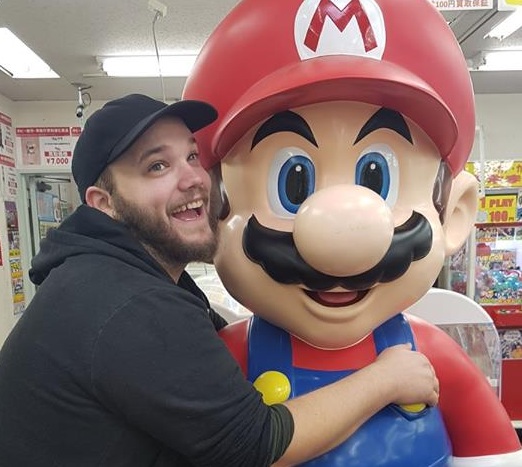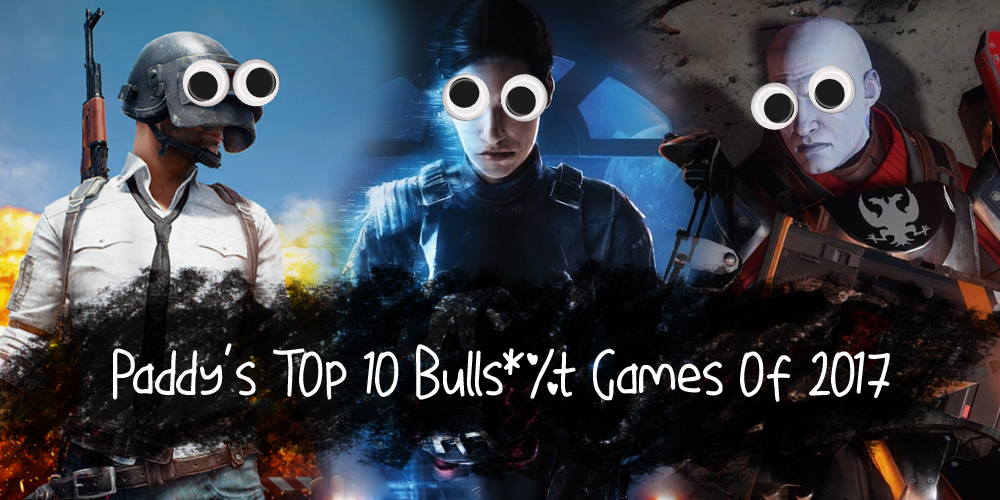
Some games are outright terrible, others just poorly made, and then there are games that strive to hitherto unforeseen levels of chicanery and guff. As always, this isn’t a definitive list but my observations and experiences across the year. If there’s a game missing that you feel deserves a place on this list then perhaps I didn’t play it. Maybe I just disagree with you. Who knows? Feel free to tell me how wrong I am in the comments, should you feel so strongly. I don’t have as much time as I used to, however, so while I used to go out of my way to play games I thought would be terrible, I can’t do that anymore. What that means is that when the games that I do play turn out to be crap in some way, I’m even god damned angrier because then it’s just wasting my time. These are ten of those games, they are terrible for what they’ve done, and I make no apologies for mouthing off about this complete bullshit.
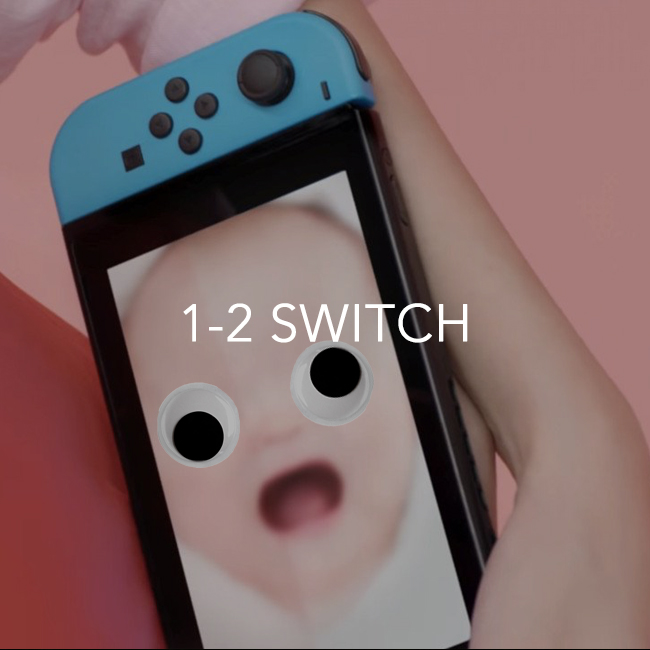
The Switch has already outstripped records set across the planet and is set to eclipse the Wii U in terms of overall sales, and the console hasn’t even been out for a full year yet. In fact, I don’t think it’s a bold prediction to say that it could one day be the most successful console ever. So for the love of God, Nintendo, what were you thinking with 1-2 Switch? Apeing at Wii Sports in an attempt to harvest that launch-title gold, 1-2 Switch is a series of half-baked mini-games that utilised the “HD rumble” and motion features of the new joy-con controllers. It also weilded the power of social awkwardness like a cudgel, outright instructing players not to look at the screen but deeply into each others eyes, unbreakingly, possibly while making this face. I can only imagine the weird tension in the living room on Christmas morning, Grandpa leerily staring down his Grandson, before performing a pantomime of shooting him down. Believe it or not, this is actually less cringey than what you would see if you looked at the screen. This is a full-priced game, too – solid 5/7 bullshit.
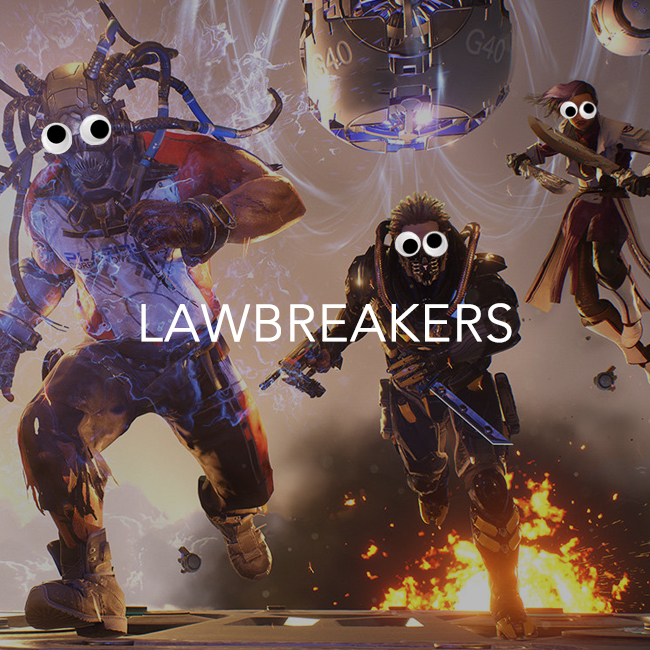
LawBreakers wasn’t just dead on arrival; its bloated corpse was already pulsating with the activity of ten thousand maggots by the time it reached the storefront. The brainchild of Cliff “CliffyB” Bleszinski, LawBreakers was an attempt to return to the arena FPS’ of old but with the added gimmick of part of each map’s gravity being removed. That’s it. That’s the whole draw, and somehow, in CliffyB’s mind, that was worth pouring years of development and funds into the project to see it fully realised. The environments were far too busy, with an excessive amount of detail that made it difficult to even see players at times. This was at least partly due to the characters themselves having the very best model and texture designs from the early 2000s. Aside from the gravity mechanic, which was much more of a hindrance than an enhancement, the early betas played like a misguided attempt to recreate Quake.
Well, LawBreakers came out and, even with my cynical pre-conception that the game would be a flop, I was astounded by how terribly it performed. As of the time of writing this, Steam has officially hit zero active players for the game on a few occasions. I’d not be surprised in the least if many people reading this didn’t even know what LawBreakers is, let alone how well it did on Steam. For those who are at least a little curious about this giant, steaming pile of bullshit, YouTuber Crowbcat has a hilarious summary via press-spots that you can watch.

Oh, Gearbox. My dear, sweet Gearbox. How I once looked at you with adoration in my eyes, Borderlands still a darling franchise in the industry. And now… Now it seems you’re little more than the equivalent of video game grifters, looking for the next project you can barely touch with minimal effort to turn into maximum profit. The latest victim of theirs is Bulletstorm, a game that I enjoyed quite a bit when it first came out and felt as though it never got the love it deserved then. Cruel are the hands of fate that it should fall into Gearbox’s lap, who watched as it accrued all kinds of new bugs and glitches during its “remaster.” Lighting problems, random crap cutting in at the edges of the screen, and precisely zero effort to even adjust the design to modern standards.
Actual time and effort went into resurrecting the online multiplayer of this game, a mode that didn’t even do well when it first released. Who the hell was playing Bulletstorm online in 2017? I wasn’t, were you? Of course not, no one was – I know, I waited in the lobby for a solid forty minutes during primetime with not another soul in sight. The time that went into recreating that mode could have been better spent on literally anything, and it would have been infinitely better. And sure, a good deal of the blame also lies with People Can Fly, the actual developers of the game, but this all still happened under Gearbox’s direction. The most significant contribution from Gearbox was the addition of Duke Nukem as a playable character, with none of the NPCs’ dialogue changed to match. And yes, I’m aware that was supposed to be the joke, but it wasn’t funny, nobody was laughing. I bloody well wasn’t. If anything I just hugged my Borderlands 2 Special Edition Loot Chest close and wept gently at the thought of the bullshit Dirty Uncle Randy will end up putting into Borderlands 3.
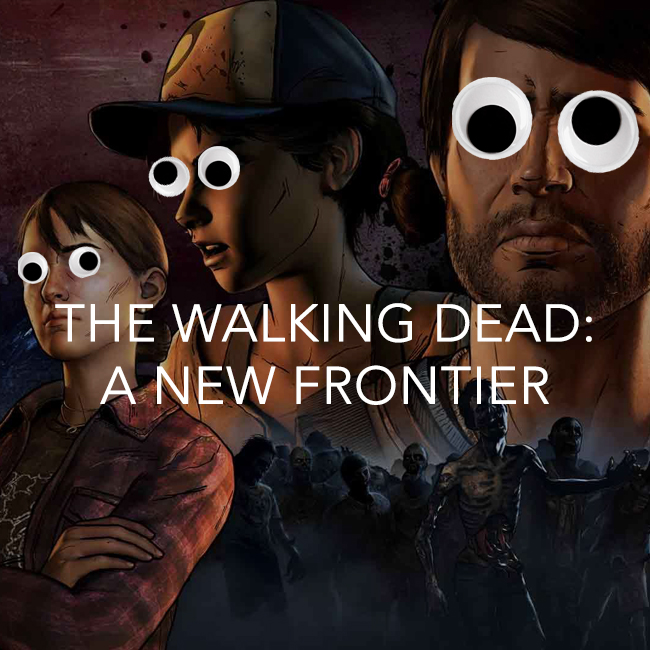
More like, “The Same Old Bollocks.” Telltale’s The Walking Dead: A New Frontier is but the latest demonstration that they’re little more than a one-trick-pony, ostensibly producing the same title for the fourth time. (That is, if one includes 400 Days, but excludes Michonne, as one should.) Despite spending the first two seasons of the series focusing on Clementine and having players connect with her, she gets relegated to a side-role this time around in favour of some random dude I could care less about. It’s not that Javi is a bad character in and of himself, but his presence seems utterly ad-hoc in the face of everything that’s come before.
The story arch apes at the relationship between Clementine and Lee, with Clem becoming a delinquent of sorts in this season, and Javi awkwardly taking her under his wing. Or… Is it meant to be the other way around? I’m not even sure the writers knew, to be frank. Whatever it’s intention, A New Frontier couldn’t follow through and succeeded only in highlighting the newly created distance between Clementine and the player. Make no mistake, Clem is the main character of this series, and she got watered down so much in this season that it became painful to sit through. Add to that a tripling-down on the God-awful mechanics that were boring and stale in 2013, let alone what they’re like now, and A New Frontier was one of my biggest disappointments of last year. Perhaps the fire that’s been lit under the collective ass of Telltale Games in the form of massive layoffs will remind them that creativity and excellent drama doesn’t shouldn’t be pulled exclusively from the Bobby Kotick playbook. I can almost hear Telltale’s writers calling to one another: “What’s the most shocking death we can throw in at this point?”
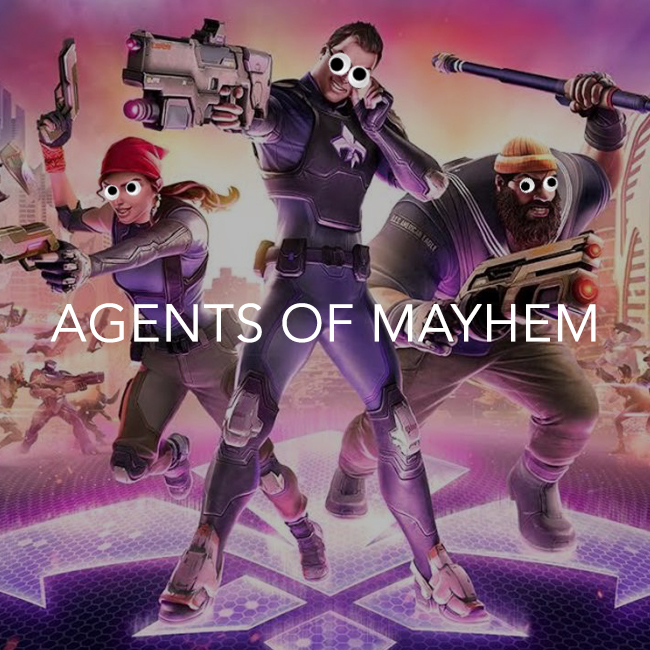
I’m not entirely convinced that Agents of Mayhem isn’t actually some kind of mash-up dream game from the future. It felt like the “Ultimate” release version for a series of games that haven’t been released yet, featuring an all-star ensemble cast of characters that have never before seen the light of day. It was a confusing mess from the out-set, with the game using Saturday Morning Breakfast Cartoon style humor to give winks and nods to a list of unknown characters it treated like old-but-gold friends. Every original character looked, sounded, and played as though they’d sprung from the sketchbook of a highschool art student that had just discovered consistent colour themes. Johnny Gat of Saints Row fame also makes an appearance because of course he does, with Volition seemingly wheeling out their one iconic character every chance they get these days.
These are just the trimmings, though. I can assure you that the meat on the bone is just as dry and bland. Taking the worst aspects of Saints Row’s design, the world is full of X many Ys to Z with none of the drive that makes doing that sort of thing fun. It’s content for content’s sake, and you feel like you’re accomplishing bugger all while being bored to tears. The core gameplay mechanics aren’t even enjoyable, and the visuals are an absolute clusterfuck to the eyes. All on-screen actions resulted in a shower of particle effects that would damn-near blind anyone unfortunate enough to be within line-of-sight of the screen. I’m not entirely sure this wasn’t intentional on the developers’ part because surely, at some point during development, they must have realised they were working on some seriously uninspired and derivative bullshit.
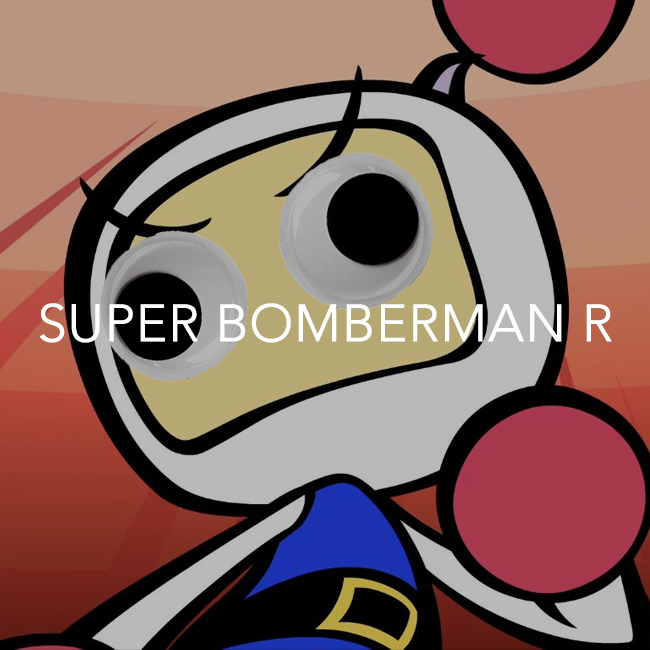
That this made it through the entire development process at Konami without even raising an eyebrow isn’t shocking. Konami has repeatedly demonstrated its complete lack of respect for its own IPs in the past, so at worst I was expecting a phoned-in Bomberman game with a heavy multiplayer focus. What I wasn’t expecting was the depths that they were willing to sink to in order to flog this crappy piece of crap. Released for the dubious occasion of the franchises 33rd anniversary, apparently a significant milestone anniversary, Super Bomberman R actually follows on from the events of Super Bomberman 2 for the SNES. I love Super Bomberman 2 for the SNES, and Super Bomberman R squats over the memory of that game, unleashing a hellish swirl of soft serve garbage all over what should have been an easy slam-dunk.
Starting out by turning the titular Bomberman into just one of many Bombermen, even though some of them are actually Bomberwomen (that are portrayed as Bombergirls, but still called Bombermen.) The single-player campaign starts out around the “cringey anime” level, ending somewhere at “alcoholic breakfast cereal cartoonist.” Lathered across this horrific and unnecessary story is some of the worst gameplay I’ve ever played in a Bomberman game, and I played the absolute shit out of Bomberman 64. An isometric-with-extra-slant camera perspective continually shifts around, zooming in and out, blocking your view of pertinent parts of the stage with the HUD and otherwise making you feel sick. This also makes controlling your Bomberman a challenge in itself, which in turn changes the gameplay from simply dull and repetitive to eye-gougingly frustrating.
“Why does any of this matter,” you might be wondering, “don’t you only ever play Bomberman for the multiplayer anyway?” Good question, hypothetical reader, and the answer is that playing the single-player at least a few times is basically required to unlock all the multiplayer content. And I’m not talking about secret stages or characters unlocked for beating the game. The more interesting characters and stages for multiplayer, clearly visible from the outset, are locked behind an in-game currency, obtained by beating the single-player levels. Bear in mind, there are no microtransactions in this game, but there is still a system that looks like it was designed to support microtransactions, forcing you to play the worst parts of the game repeatedly. I don’t know what it is you’re up to, Konami. Are you just getting off on your players’ suffering now? Whatever the reason, using Bomberman as a low-effort testing grounds for your mind games is some high-grade bullshit.
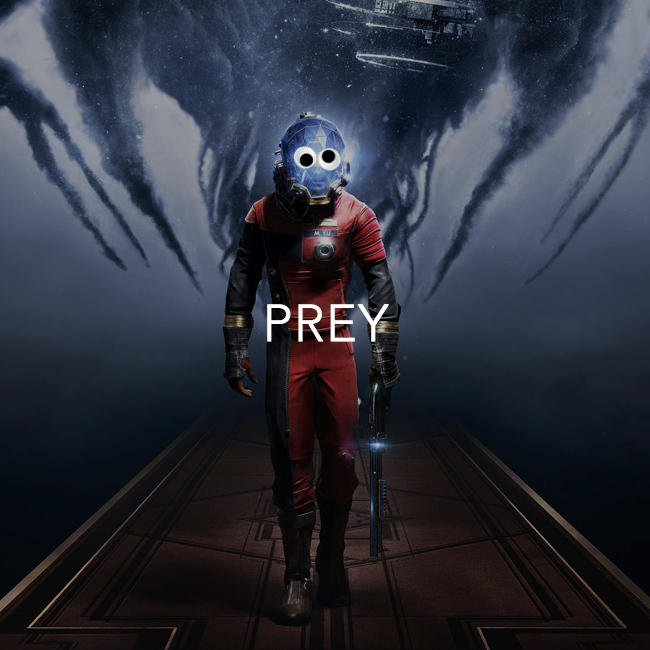
So, for those of you who are familiar with what was once Prey 2, you probably already know why this is on the list. For everyone else, watch this trailer from 2011 and get a sense of what Prey could have been so that you’re appropriately angry. I mean, the original Prey (the first game, not this current abomination) was an intense and weird title in its day, with a premise that is excellent on its own. But hey, things are always changing, series’ are forever being rebooted, so why not give it a chance?
The first half hour of this game is so good, it’s what suckered me into playing through to the end. It sets up the plot nicely without giving too much away (or so you’d think at that point), introduces you to the core mechanics without bogging you down in tutorials, and unleashes you into the world. Enemies at this point are actually crafty, there’s an element of the unknown, and you start to feel like you’re the only person left alive on the station. You only ever talk to people over comms, never in person; you even speak with a version of yourself at one point, and you soon begin to question what’s real and what isn’t. It sets an absolutely magnificent tone that the rest of the game proceeds to smash to pieces with the most overdone, ham-fisted horror tropes from both game and film collectively.
The enemies rapidly change from being mysterious, threatening interlopers into irritating pains in the ass, no more than slightly dangerous obstacles on your mission to pull a switch. Or push a button, and sometimes, if you’re lucky, you’ll actually get to do something fun. That creeping feeling of isolation is completely shattered when the game starts throwing every stereotypical character type it can at you, in the most predictable ways. Getting around the space station is a chore in itself, and there is so much backtracking in this game that it begins to physically hurt to play after awhile. And the ending is some real sweet-and-salty bullshit! It is the absolute weakest cop-out I’ve ever seen in a game, and the worst part? The little double-twist that it drops on you at the end is way more interesting than anything you just played, yet it still isn’t as cool as being an alien bounty hunter.
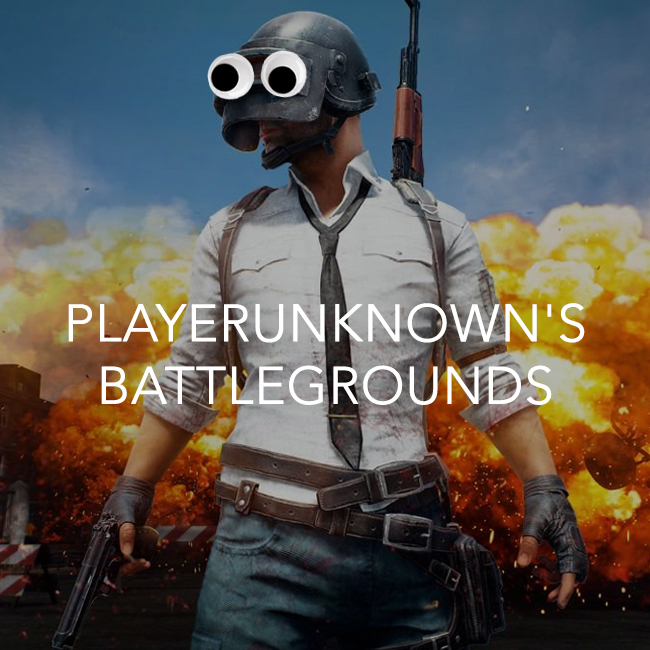
“But Paddy, you silly shit,” I can already hear many of you saying, “this game is amazing, China is, in fact, number one, and you’re probably just bad at the game!” To which I reply that only two of those things are correct, and even though I have poured a great deal of time into the game, I’ve got a laundry list of complaints that go beyond nit-picking. If you want a run-down of the biggest design and technical problems, I addressed those in my recent review of the game, but what I want to talk about here is how PUBG Corp and Bluehole have handled the game. What reality do these companies exist in, and why is it so incongruent with our own? And with over twenty million copies sold since its Early Access launch, where in the hell has that money gone?
The game has hit official release, leaving Early Access on Steam in the process, meaning that the game is supposed to be in a somewhat finished state. While I understand that MMOs are never quite finished being developed until they stop altogether, we still see technical problems post-1.0 that were present way back in the early Early Access days. It’s not like this can even be argued away by saying that there’s a deluge of new content being introduced and adjusted since the biggest change to PUBG’s design to-date is being able to jump over waist-high walls. The game also still looks very, very banal, a sort of stilted, bulk-standard direction seemingly born from and inspired by the Unreal Asset Store. Twenty million copies sold, guys – hire some damn artists for pity’s sake.
These are hardly the end of PUBG’s woes. There are huge problems with cheaters, an extremely toxic online community, and problems with the game admins themselves. Banning streamers because of hurt feelings in the face of blatant parody, banning players for suspected stream-hunting without much evidence, banning players… Just because? Any form of technical support for the game is also near non-existent outside of an “Unofficial” support Twitter account that points you to a forum, where getting a response from the devs is like playing roulette. And these guys had the stones to try and lay sole claim to the Battle Royale shooter genre as a whole? Complete and utter bullshit.
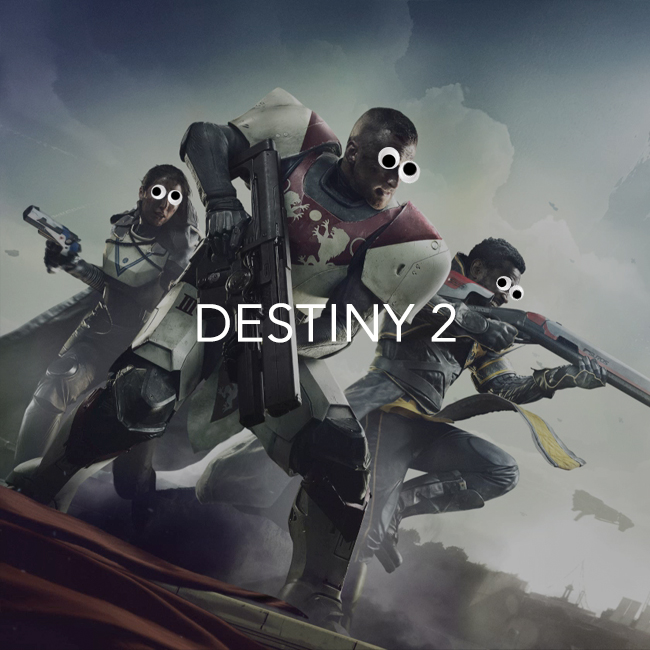
For the record, I quite enjoyed my time with Destiny 2, and have been somewhat remiss with it of late. I played it on PC, and I felt like the early complaints among the console crowd about a lack of content were perhaps forgetting what Destiny 1 was like on release. Before the first major problems surrounding a lot of the microtransaction stuff surfaced, I had a jolly good time, especially playing with friends. Almost every major complaint I had with the first game was in some way fixed by Destiny 2 to the point that, taken purely on how it plays, I think that it’s possibly the best FPS of last year. Yeah, that’s right, it’s better than PUBG – if only because it reliably works.
It’s not so much what’s in the game that has me irked, however, but how it’s been inserted by Bungie and their dark, greedy masters, Activision Blizzard. Through the influence of their dark masters, Bungie has found no shortage of methods for screwing its player base for profit, a litany of industry sins now branded to their… brand. Gating off previously free content behind paid-for DLC, aggressively pushing in-game purchases, and lying to players while handicapping their progress are but a few of the ways they have been terrible, terrible people. I mean, come on, Bungie – you’re the Halo guys! You can be better than this. I know you can. Just show a little backbone in the face of the company that wants to drive your IP into the proverbial dirt.
Of course, lacking the conviction of their actions and not wanting to harm their task-masters’ bottom line, Bungie was forced to walk back many of these changes with a half-hearted apology each time. “We agree with the community” is a phrase that is ringing increasingly hollow when it invariably follows, and is followed by, yet another attempt by the studio to shake you down for every penny it can grab. This is a slippery slope, Bungie, mark my words; greedily grifting your players and gaslighting them at the same time is just how these things start. Before you know it, you’ll be making microtransactions and loot boxes a core part of the game’s progression model. Hey, speaking of…
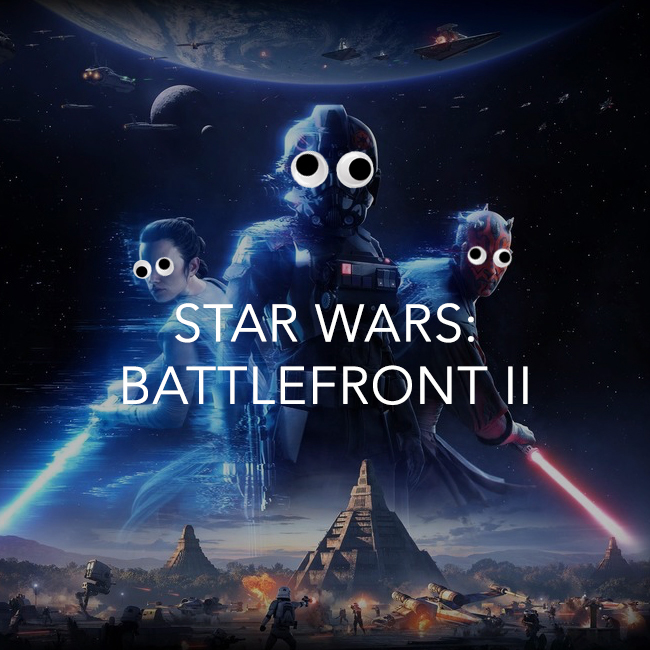
I would wager that this will be on every “Worst of 2017” list on the internet, if only because of the trouble that it’s caused within the industry. Brushing those controversies aside for a brief moment, this just isn’t a great game. Supposedly an “apology” game to fans for the rush job that was the first Star Wars Battlefront from DICE, Star Wars Battlefront 2 is nothing short of an insult to those same fans. Buggy and broken, sections of the game looked laughably amateurish at best, with the console version reportedly still having problems with bugs. Once again, it couldn’t live up to the legacy of the original Battlefront games of yore, clearly having been pumped out to beat the new movie release for its inevitable tie-in.
That would be bad on its own but, determined to outdo themselves, EA waited until a week before release to unveil Battlefront 2’s progression system, built entirely around microtransactions and loot boxes. At its original inception, players would be spending a minimum of a few thousand dollars to unlock everything, or they would be grinding for dozens of hours just to unlock a single character. After the immense backlash from the community, EA eventually pulled these “features” from the game as an attempt to show good faith. The result of that action, however, was to highlight just how predatory the microtransactions were. In fact, their removal from the game meant that everything from reward amounts to unlock costs had to be adjusted because they were the only feasible way to make headway.
Of course, completely pissing off their user base and allegedly landing themselves in hot water with Disney still wasn’t enough to get the message across to EA that purchasable loot boxes are inherently evil. While they’re gone from Battlefront 2 for now, in the same statement released to “apologise” for being caught out on trying to fleece their players, EA also said they reserve the right to put them back in at a future date. Loot boxes and similar economies are still going strong in several of EA’s other franchises. Such is the threat of this new way to squeeze money from players that gambling authorities around the world are now investigating loot boxes for potential regulation.
Star Wars Battlefront 2 wasn’t even the gravest of EA’s sins, just the most notable example. They also axed Visceral Studios, the thirteenth studio to die under a hail of EA’s bad decisions, contempt for the studio’s player base, and other assorted bullshit. And now, DICE are holding the dripping bag of fetid shit that is SWBF2, and oh yeah – you better hope Anthem does alright, Bioware. EA have a new toy in Respawn, and what have you done for them lately – Mass Effect Andromeda? Haha! Happy New Year!

